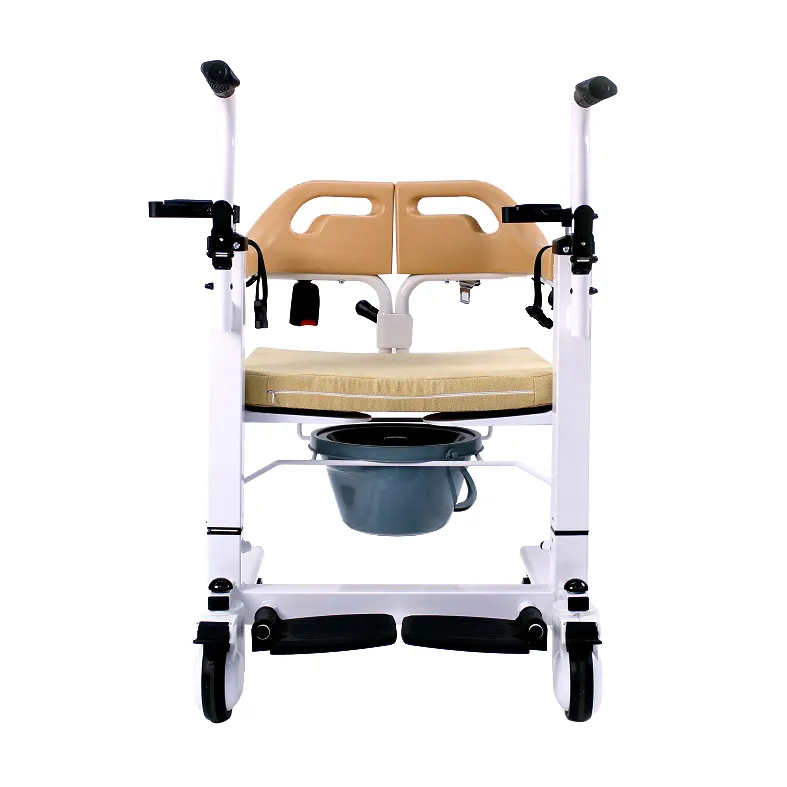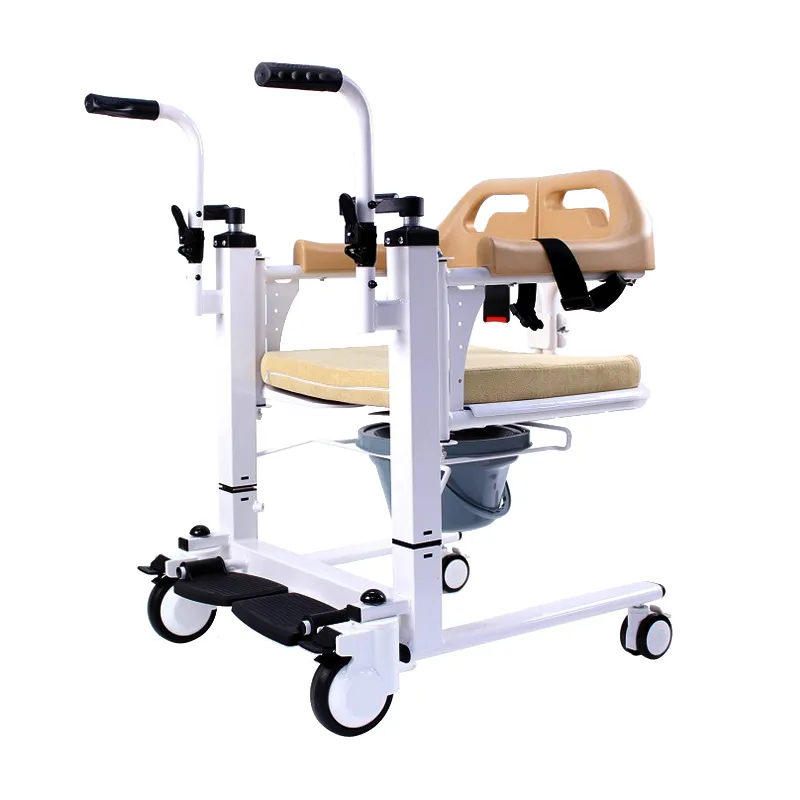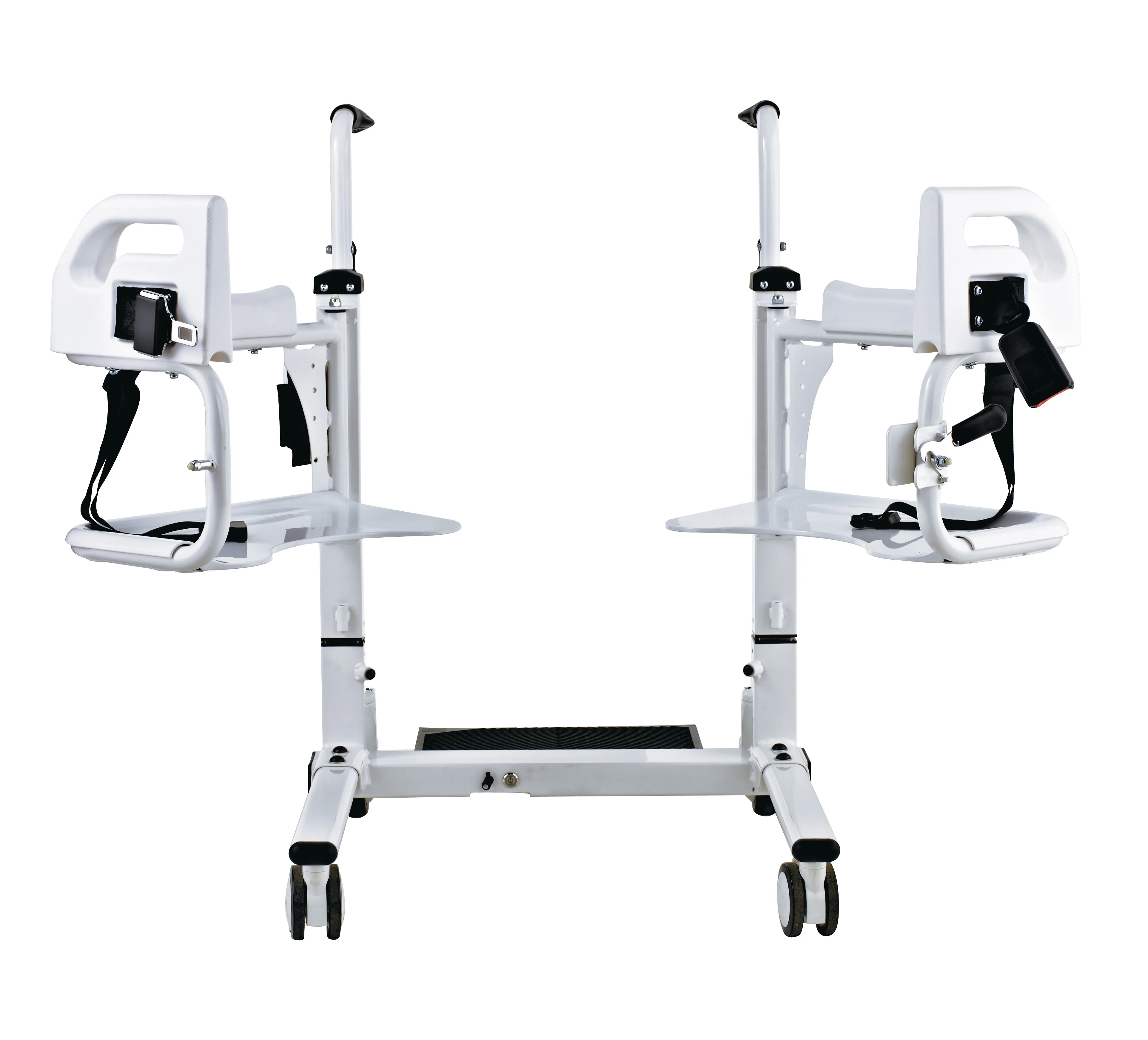The term "transfer chair" has become increasingly common across a wide range of medical device applications, including modern healthcare, rehabilitation care, hospital emergency care, and assisted living for the elderly.
However, across institutions, brands, clinical contexts, and product categories, users often encounter terms like "lift transfer chair" and "transfer wheelchair." These seemingly identical devices possess subtle differences in structure, function, and usage scenarios.
So, "What's another name for a transfer chair?" This question often puzzles medical device purchasers, caregivers, device designers, and end users.
To clarify the correspondence and categorization between these terms, this article will begin with the basic definition of "transfer chair" and comprehensively analyze its alternative names in professional contexts. It will also elaborate on the concepts, structure, function, scope of application, and naming logic of "lift transfer chair" and "transfer wheelchair."

What is a "transfer chair"? — A common name for medical mobility devices
A "transfer chair" is an assistive device used in medical care to assist individuals with limited mobility with transfers and short-distance mobility. Its primary function is to enable quick, safe, and smooth patient transfers between various devices, such as beds, toilets, bath chairs, and wheelchairs, through its seat design, support structure, and caster mechanism.
In the equipment classification, "transfer chair" does not refer to a specific model but is a broad concept encompassing multiple subcategories, including but not limited to:
1. Lift transfer chair
2. Transfer wheelchair
3. Folding transfer chair
4. Stair transfer chair
5. Emergency evacuation chair
In other words, "transfer chair" is a general or overarching term, and its alternate names may vary depending on the specific functionality.

"Lift transfer chair": A more specialized term with more functionality
1. Definition and Origin
A "lift transfer chair" is an enhanced version of a "transfer chair." It not only provides basic transfer functions but also features an electric or manual lift system, allowing caregivers to transfer patients between different heights without requiring additional force. For example, lifting a patient from a bed to a toilet, from a sofa to a wheelchair, or from a wheelchair to a nursing bed all involve height differences. The "lift" function significantly improves operational efficiency and reduces the burden on caregivers.
2. Core Functional Features
· Lift System: The seat height is adjusted using a hydraulic lever, electric motor, or mechanical lever;
· Openable Structure: Part of the seat or bottom can be opened to facilitate insertion under the patient's body;
· Fixing and Support Devices: Such as guardrails, safety belts, leg supports, and backrests;
· Multi-point brakes and wheel locks: Enhance stability and safety during use.
3. Relationship with "Transfer Chair"
The "lift transfer chair" is a subcategory of the "transfer chair" system. Its name is distinguished by its core function: "lift." In other words, when people refer to a "lift transfer chair," they are emphasizing the transfer chair's important ability to be "height-adjustable."
Thus, we can say that "lift transfer chair" is a specific form of the "transfer chair," a refined name based on its functional dimension.
"Transfer Wheelchair": A transfer device that more closely resembles a wheelchair
1. Conceptual Distinction
Compared to a "lift transfer chair," a "transfer wheelchair" emphasizes its physical structure and mobility, which are similar to a traditional wheelchair. It typically has the following characteristics:
· Similar in structure to a wheelchair, but lacks handwheels;
· Pushed by a caregiver, not capable of autonomous control;
· Mostly used for transporting patients in hospitals or for short distances within airports and nursing homes;
Most are non-liftable and have a low center of gravity, making them easy to push on flat surfaces.
2. Functional Comparison
Features | Transfer wheelchair | Lift transfer chair |
| Can it be raised or lowered? | ❌ No | ✅ Yes |
| Can the user push it by themselves? | ❌ No | ❌ No |
| Can it be used to transfer bedridden patients? | Generally used for seated individuals | Can be used for sitting or lying down |
| Morphology and structure | Close to wheelchairs | Similar to a portable bed chair |
| Compatible with nursing needs? | Moderate to mild | For those with moderate to severe disabilities |
| Can it be disassembled? | Mostly non-removable | Most are foldable and disassembled |
3. Contextual Terminology Confusion
In some sales channels and among users, the terms "transfer chair" and "transfer wheelchair" are often used interchangeably. In reality, a "transfer wheelchair" is a type of "transfer chair," but with simpler functions and designed more for mobility than for position transfer.
Therefore, when discussing "another name for a transfer chair," "transfer wheelchair" can be a reasonable alternative, but it should be clarified that it refers to a transfer device with a structure similar to a wheelchair, which typically lacks lifting or hoisting capabilities.

Contextual Differences in Name Usage and Professional Classification Suggestions
1. Name Preferences in Different Fields
Use Cases | Common Terms | Description |
Hospital Care Purchase | Lift Transfer Chair | Focus on functional compatibility and structural performance |
Home Care User | Transfer Chair | Simple and accessible language, referring to all transport equipment |
Airport/Train Station Transportation | Transfer Wheelchair | Similar in form to a traditional wheelchair, for ease of management |
| Nursing Home | Lift Transfer Chair / Transfer Wheelchair | Purchase equipment based on care intensity |
Different user groups and scenarios have distinct preferences for terminology. Accurate terminology can help improve procurement efficiency and reduce communication errors.
2. How to Choose the Right Terminology?
Professional recommendations are as follows:
· If the device has height adjustment, it should be called a "lift transfer chair";
· If it is only used for moving and pushing without a lift mechanism, it should be called a "transfer wheelchair";
· If it refers generally to any chair-type device for transferring patients, it can be called a "transfer chair."
Thus, the term "transfer chair" may be called a "lift transfer chair" or a "transfer wheelchair" depending on its specific function and structure. In actual use, it is recommended to consider the product manual, design specifications, and usage requirements to determine the correct terminology.

Regarding Different Names for Transfer Chairs
—We can clearly state that a "transfer chair" can be called a "lift transfer chair" or a "transfer wheelchair" in different scenarios, but its functional scope and design focus must be clearly defined.
The "lift transfer chair" emphasizes height adjustment and lifting capabilities, making it particularly suitable for individuals with severe mobility limitations and bedridden patients. The "transfer wheelchair," a more wheelchair-like device, is suitable for short-distance mobility for those with mild to moderate mobility.
What is the quality principle of Dayang Medical?
Dayang Medical strictly follows the 100-1=0 principle, meaning that even one defect is unacceptable in our quality control. Every wheelchair, hospital bed, or walking aid from our China factory undergoes strict inspections before delivery. As an ISO13485, ISO9001, CE, FDA, and TUV-certified manufacturer, we guarantee high quality at competitive prices. Buyers benefit from reliable products, stable wholesale supply, and affordable purchasing opportunities.










